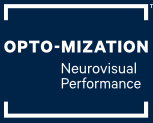
It's the time of year when it's hard to escape driving in the dark. Glare from new LED or HID headlights, water on the road, rain, snow and more all gets worse when it's dark out. Often it gets to the point when people have to stop driving at night all together. Here are some of the main causes for problems driving at night.
- Certain eye health conditions can cause trouble with night driving. The common causes are cataracts and macular degeneration. Both are easily diagnosed and cataracts are easily treated. Have your optometrist check you for cataracts and macular degeneration.
- If your prescription is out of date the unfocused images can cause more glare than there would otherwise be. Be sure that you're working with a recent prescription that has been accurately made.
- Your prescription may be up to date, but it may still be a problem. Sometimes the most up to date prescription for 'seeing clearly' can fail to solve problems driving at night. In fact, your prescription may even be part of the problem. This is because it's harder for your eyes to work together at night. See an optometrist who specializes in neuro-optometry so that the prescription will take into account how your eyes work together during night time driving.
- If your eyes don't work together properly it can cause trouble with everything from double vision when driving at night, to complaints about the brightness of new car headlights. Problems with how your eyes work together can sometimes slowly get worse over time, or it may come up suddenly after a concussion, head injury, whiplash, or vestibular neuritis. Have our Victoria or Nanaimo neuro-optometrist check how your eyes are working together, and how it will affect your night time driving.
